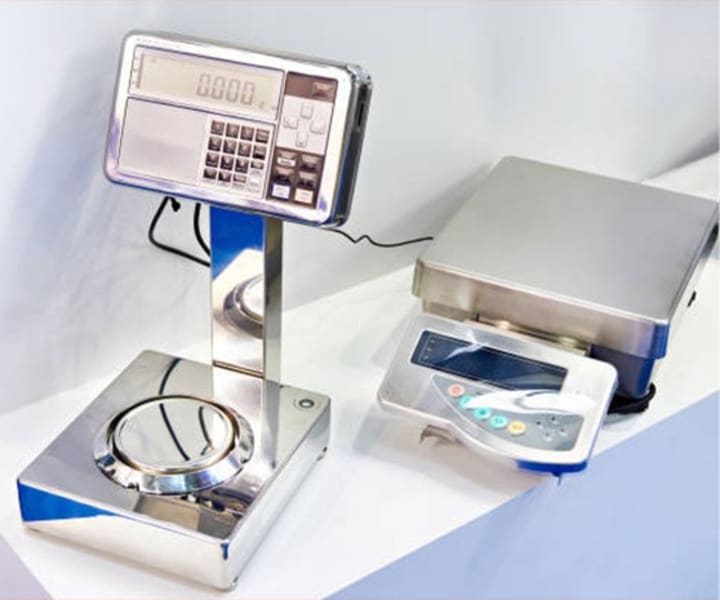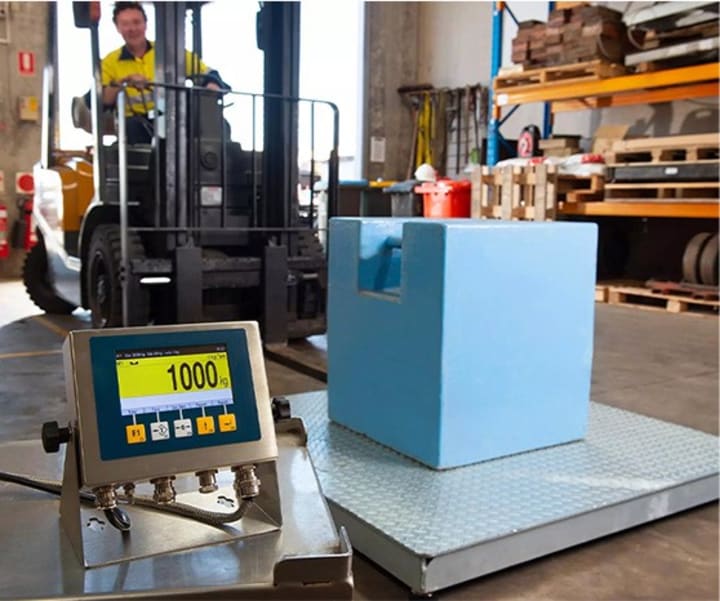How Digital Scale Calibration Ensures You're Weighing with Confidence
Mastering Digital Scale Calibration

From perfectly balanced baking masterpieces to meticulously measured ingredients for that award-winning science project, digital scales have become an essential tool in our everyday lives. But how can you be certain your trusty scale is delivering accurate measurements, especially after years of service? The answer lies in understanding the importance of digital scale calibration.
Why Calibrate Your Digital Scale?
Imagine baking a cake – you follow the recipe religiously, yet the final product ends up dry and crumbly. One potential culprit could be an inaccurate scale. Over time, due to factors like wear and tear, or even simply environmental changes, digital scales can develop slight discrepancies. Regular calibration helps ensure your scale maintains its precision, guaranteeing consistent and reliable measurements.
The Benefits of Consistent Measurements
The advantages of proper digital scale calibration extend far beyond perfectly balanced cakes. Here's a closer look at the benefits:
Accuracy in the Kitchen: Precise measurements are fundamental to successful baking and cooking. Calibration ensures you use the correct amount of ingredients, leading to consistent and delicious results every time.
Health and Fitness Tracking: For those tracking their calorie intake or portion sizes, accurate measurements are crucial. Calibration ensures you're getting the most out of your dietary efforts.
Scientific Experimentation: From measuring ingredients for science projects to conducting precise analyses, accurate measurements are vital in scientific endeavors. Calibration guarantees the validity and reliability of your results.
Business Applications: Accurate weight measurements are essential for businesses dealing with precise quantities, such as pharmacies or laboratories. Calibration safeguards against costly errors and ensures customer satisfaction.

The Calibration Process: Demystified
The process of digital scale calibration may seem daunting, but fret not! Most digital scales come equipped with a calibration function, and the steps involved are often straightforward. Here's a general overview:
Consult the User Manual: Each scale has its specific calibration procedure. Refer to your user manual for detailed instructions unique to your model.
Gather Calibration Weights: Calibration typically involves placing specific weights on the scale to verify its accuracy. The required weight(s) will be specified in the user manual. You can purchase certified calibration weights from a variety of online retailers.
Prepare the Environment: For optimal results, ensure the scale is on a flat, level surface at room temperature. Avoid placing it near drafts or sources of vibration, as these can affect readings.
Power On and Stabilize: Turn on your scale and allow it to warm up for a few minutes. This allows the internal components to reach a stable operating temperature, ensuring the most accurate readings.
Enter Calibration Mode: Following your user manual's instructions, locate the calibration button or sequence that activates the calibration mode. This may involve a specific button press combination or navigating the scale's menu.
Zero Point Calibration: Often the first step involves setting the zero point. This verifies the scale accurately reads zero weight when nothing is placed on the platform.
Weight Calibration: The scale will prompt you to place the specified calibration weight(s) on the platform. Once placed, the scale will automatically adjust its internal settings to match the known weight.
Confirmation: The calibration process usually concludes with a confirmation message or a return to the normal weighing mode. Refer to your user manual for specific completion cues.
Frequency of Calibration
The recommended frequency of digital scale calibration depends on several factors, including:
Frequency of Use: Scales used daily will require more frequent calibration compared to those used occasionally.
Weight Capacity and Precision: High-precision scales or those used for heavy-duty applications may necessitate more frequent calibration.
Environmental Conditions: Scales exposed to extreme temperatures, vibrations, or dust may require more frequent calibration.
Beyond Calibration: Maintaining Accuracy
While calibration is crucial, here are some additional tips to ensure the continued accuracy of your digital scale:
Handle with Care: Avoid dropping or overloading your scale, as this can damage internal components and affect readings.
Clean Regularly: Use a damp cloth to clean the platform and housing. Avoid harsh chemicals or submerging the scale in water.
Store Properly: When not in use, store your scale in a cool, dry place away from direct sunlight.

Conclusion:
For those seeking a reliable and long-lasting digital scale, consider investing in a brand known for its commitment to quality and accuracy. Here at Blake & Boughton, we offer a wide range of digital scales specifically designed for various needs, from kitchen essentials to high-precision laboratory balances. Our scales are renowned for their durability, user-friendly features, and, of course, their commitment to accurate measurements through a simple and effective calibration process.
About the Creator
Black & Bongton
Blake and Boughton provides sales, services, repairs, and calibrations of industrial weighing equipment. Their commitment to quality ensures accurate and reliable weighing for businesses in various sectors.






Comments
There are no comments for this story
Be the first to respond and start the conversation.